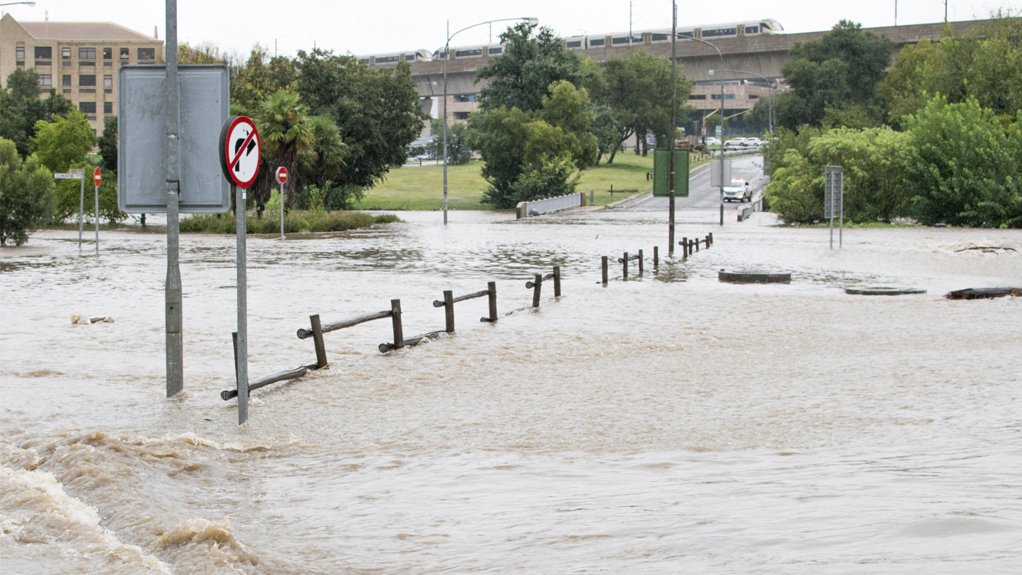
+27 11 441 1111
SRK House, 265 Oxford Road, Illovo, 2196, South Africa

Govt departments urged to focus on integrated disaster risk reduction
Disaster risk reduction (DRR) should be a priority for government at all levels, but failures in adequately addressing major factors, such as the Covid-19 pandemic, climate change and growing economic hardship in South Africa, point to insufficient capacity and commitment to carry through on this mandate, says SRK Consulting geographical information system and disaster management principal consultant Martin Stols.
He explains that the Covid-19 pandemic has been a stark reminder of the importance of being prepared for unexpected events, as well as serving to demonstrate that certain risks are often underestimated, and that there is no room for complacency.
“The top priority hazards that we identified in disaster management plans in 2019 were fire, floods and drought; while human disease was ranked fourteenth,” says Stols.
In this regard, he says that, although the Covid-19 pandemic changed this perception, it also taught people how different sectors are impacted during a disaster and how interdependent many sectors are during such an event.
Stols stresses that DRR is “everybody’s business” and is vital to avoid taking a silo approach when planning for, and responding to, disaster risk.
INTEGRATED APPROACH
As such, he says an integrated approach is required, because sometimes there is a misconception that certain departments are responsible for a certain category of hazard, whereas in reality, there are always knock-on effects that extend well beyond the core impacts.
“Disasters frequently demand more from government agencies than their direct mandate suggests,” says Stols.
He explains that, for example, although the Department of Forestry, Fisheries and the Environment (DFFE) has a clear mandate to protect the environment, when the Covid-19 hard lockdown led to the closure of South Africa’s national parks, many households around these parks needed emergency assistance.
“They were stripped of their primary source of income through tourism-related activities and this led to the DFFE having to support these communities by providing food parcels and monetary support.”
As such, Stols says that disaster risk involves various factors and can often be most effectively addressed by reducing vulnerability and improving capacity or resilience – a role which includes the responsibilities of a number of departments and sectors other than the department dealing directly with the hazard.
However, progress can only be made when DRR is mainstreamed into the operations of government, he says.
This requires DRR being well grounded, or institutionalised, within each department or agency.
In practical terms, this means having the required policies and interventions in place, as well as organisational structures and cultures in support of DRR within each development intervention.
Stols notes that disaster management planning is already required by law, but that there are high levels of noncompliance.
South Africa’s Disaster Management Act of 2015 demands that each national organ of State must conduct a disaster risk assessment for its functional area, map these threats and prepare a disaster management plan (DMP).
However, he says, many national departments have not submitted DMPs to the National Disaster Management Centre (NDMC), as the law requires.
This presents a significant challenge to the national DRR effort, as the NDMC is mandated to make these plans available to provincial and municipal disaster management centres. Stols adds that the law also mandates the departments to coordinate and align their DMPs with other stakeholders, and to invest in DRR.
However, without full compliance at the national level, he says the roll-out of disaster management to other levels of government inevitably becomes compromised.
COMMUNITY VULNERABILITY
South Africa’s high rates of unemployment, further exacerbated by Covid-19 restrictions, translates into increasingly vulnerable communities. “This makes disasters far more devastating, both in their immediate impact and their long-term effects on livelihoods and quality of life,” he says.
Therefore, mainstreaming DRR into the development planning process is important for sustainability, and essentially means looking critically at each programme, activity and project being planned, not only to reduce the existing disaster risks but also to reduce the creation of new risks, says Stols.
“This would allow a positive shift of focus towards removing root causes of communities’ vulnerability to hazards.
“Increased resilience, which would include better housing, infrastructure, basic services and access to resources, would reduce the dependency on government intervention and other external assistance,” he adds.
Such a mainstreaming process would be in line with the United Nations’ Office for Disaster Risk Reduction’s Sendai Framework for 2015 to 2030, the Africa Strategy of Disaster Risk Reduction Programme of Action, and the Southern African Development Community’s Regional Resilience Framework 2020 to 2030.
“Covid-19 has been a wake-up call, demonstrating the wide-ranging and devastating effects of a disaster that we were not well prepared for.
“By complying more fully with our own law and implementing the existing global and regional guidelines, we could take important steps in the right direction,” concludes Stols.




